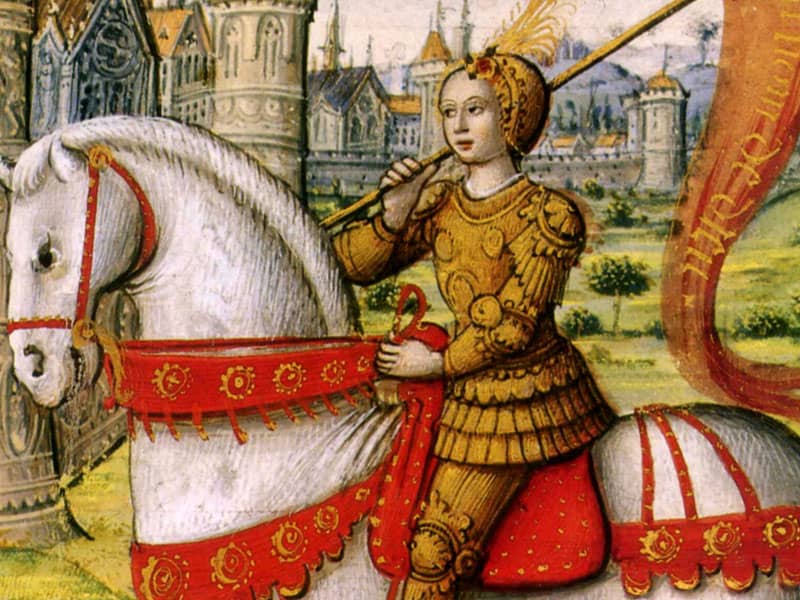The conclave process that will be followed by those princes of the church was ordered by Pope John Paul II in 1996, but it hasn't always been that way. In fact, the process has undergone nearly as many changes as the church itself.
"It's a better system than our Electoral College," said Kenneth Pennington, professor of ecclesiastical and legal history at the Catholic University of America. "With notable exceptions, the process has functioned pretty smoothly."
The first conclave, from the Latin phrase meaning "with a key," came about by happenstance in 1241, when a Roman senator locked cardinals into a cramped, dirty room in the hope of forcing a quick decision. Two months and one dead elector later, they emerged with a choice. The custom of sequestering voters became standard in subsequent decades.
In antiquity and through the early centuries of Christianity's rise as a state-sanctioned religion, both the clergy and laity of Rome participated in papal elections, though the details of those elections are lost to history.
Cardinals were given sole authority to choose pontiffs in 1059, when Nicholas II sought to prevent outsiders from meddling in church affairs. His noble intention took another 850 years to come to full fruition: the last external veto in a papal election, issued by the Austro-Hungarian monarchy via a cardinal, occurred in 1903.
In 1549, Holy Roman Emperor Charles V even sent a letter to electors informing them that he "will know when they urinate in this conclave," according to Frederic Baumgartner, author of "Behind Locked Doors: A History of the Papal Elections."
"In effect," said Baumgartner, "today's conclave is the result of centuries of efforts to eliminate the influence of outsiders like the Roman nobility and Catholic rulers on papal elections."
In 1274, Gregory X established several conclave rules that form the basis of today's norms. He declared that all cardinals were to sleep in one room, sworn to secrecy. Food was to arrive through a turnstile, and after five days sustenance would be reduced to bread, water, and a bit of wine. His regulations, intended to avoid drawn-out elections, followed one of the most outrageous conclaves in history. More than a year after Clement IV's death in 1268, cardinals were still deadlocked in a papal palace in Viterbo, north of Rome. The frustrated townspeople removed the palace's roof to hasten a decision, apparently taking an English cardinal at his word that without it the Holy Spirit could descend unhindered. The conclave dragged on for a total of 33 months.
In modern times, elections have been speedier affairs. The last conclave to last more than five days was in 1831.
John Paul's 1996 guidelines could lead to a longer conclave, however. Rather than sleeping on cots a few steps from the Sistine Chapel, where voting takes place, cardinals will bunk in the Domus Sanctae Marthae, a decidedly more comfortable Vatican residence, thus eliminating the austere conditions that served to speed up elections in the past.
John Paul also decreed that if after 28 ballots no one has been elected by the usual two-thirds majority -- a rule established in 1179 -- electors can vote to choose a pope with just an absolute majority, or opt for a majority runoff between the top two vote-getters from the previous ballot. The change means that a large faction essentially could hold strong through 12 days of voting to get its candidate elected more easily.
As for the famous smoke signal -- black if the balloting is unsuccessful, white if a new pope has been elected -- no papal constitution codifies the practice. While the first written record of ballot burning, which will take place twice a day in the latest conclave, dates back to 1417, Baumgartner found no mention of smoke signaling an unsuccessful ballot until the 19th century. After several 20th century elections in which white smoke appeared and then turned black, chemical additives were introduced in 1963 to clearly differentiate between the two.
When white smoke does curl up from the chimney atop the Vatican, onlookers will witness the result of an electoral process going back centuries, modified over time but still resembling the elections of the Middle Ages.
Essentially, what was true then -- cardinals gather to elect a pope in secrecy -- remains true today.
"It's a striking fact, easily overlooked, that the Roman Catholic Church is the oldest functioning institution in the world, and so the papacy is the oldest functioning kind of monarchy -- though a different kind of monarchy, to be sure," said Thomas Noble, professor of history and director of the Medieval Institute at the University of Notre Dame. "The sheer fact of its survival is pretty impressive."

